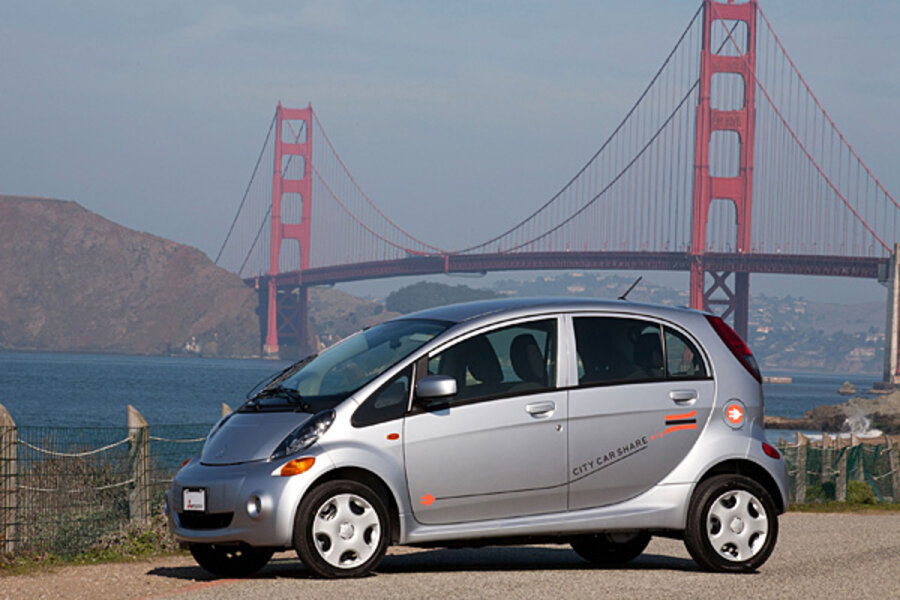Will smartphone apps cut down on cars on the road?
Loading...
Sometimes, change is painful, devastating -- just ask the folks at Blockbuster Video or the residents of any neighborhood that's been split by new freeways.
Sometimes, change is wonderful, life-giving -- just ask the folks at Netflix or ambulance drivers who now have faster ways to get from the sites of emergencies to nearby hospitals.
Change is finally coming to the taxi industry, and no one is entirely sure whether the shift will mean the death of cabs as we know them or their radical transformation.
But given what we've seen of people and businesses that have dug in their heels and tried to stem the tide of progress (e.g. George Wallace, Yellow Pages, the recording industry), it doesn't look good for today's taxi drivers.
And if they do meet their end, they'll probably have the smartphone to blame.
TAXIS OF EVIL?
The New York Times has published an interesting overview of the looming paradigm shift, which pits cab companies and municipal agencies against smaller, nimbler start-ups backed by the power of apps and social media. City officials often find themselves caught in the crossfire.
Consider Los Angeles, America's self-proclaimed home of car culture. Its streets are choked with vehicles, many of which contain just one commuter, fueling congestion problems. L.A. also witnesses a high number of alcohol-related traffic fatalities.
City politicians have lauded recent efforts to encourage carpooling and buying lower-emissions vehicles. The hope is that these advances, combined with a general trend toward driving less, will reduce traffic, cut pollution, and save lives.
Start-ups claim that they can aid those efforts by scaling back the number of car owners. For example, the app called Uber (formerly known as UberCab) quickly allows any smartphone owner to hail a taxi or car service via an app. It's simple to use, and it often promises cheaper fares than conventional cabs.
Lyft is another such app, one that allows users to find carpools or get a safe ride home after a long night out. More than a few Angelenos are making good money on the side by moonlighting as Lyft drivers, using their own cars to tote folks around town.
And as if the ease of using the Lyft app weren't enough, Lyft doesn't charge a fee for its services; instead, drivers announce a suggested donation that's typically 20% less than a normal taxi would charge. Passengers can pay as much or as little as they like (though tightwads may have a tough time getting rides down the line).
Not surprisingly, taxi companies and the agencies that license them aren't happy about these apps. And in fairness, they have some valid points -- especially those concerning the safety of Lyft drivers, who aren't usually protected by bulletproof partitions like cab drivers are.
Beyond that, though, they don't have much to stand on. Saying that Lyft is taking money out of the mouths of cabbies isn't very convincing, nor is the argument that taxis are maintained to exacting standards. (Have you ridden in a cab lately?)
OUR TAKE
Don't get us wrong: we love taxis. In places like Manhattan, they're a convenient and quick way to get around.
Outside a city's commercial center, though, it can be a very different story. (Ever tried to flag down a cab in the Bronx?) In decentralized cities like Atlanta, where things are very spread out, travelers have to know the number of at least one taxi service if they need a ride on the fly.
Simply put, cab companies have to adapt. Most still seem like they're run the same as they were in the 1970s TV series Taxi, which explains why gypsy cabs still roam the streets, even with today's stringent laws against them. The problem is only going to get worse, as apps like Lyft give anyone with a smartphone and a set of wheels the opportunity to participate in an ad hoc cab company.
If cab companies evolve, leveraging the power of apps and social media, they can remain viable and potentially cut down on city-dwellers' need to own cars. If not, start-ups from Uber to Zipcar are likely to run them down.







